Summary of Climate Disasters on the Planet from October 9 to October 15, 2024
Morocco
In Morocco, abnormal rains led to severe flooding and the formation of lakes and ponds in one of the driest regions in the world—the Sahara Desert.
The south and southeast of the country
have never experienced such a phenomenon.
But now, Lake Iriqui, located between the cities of Zagora and Tata, which
had been dry for 50 years, is now filled with water.
Many tourists and locals rushed to see this unique phenomenon for the region.
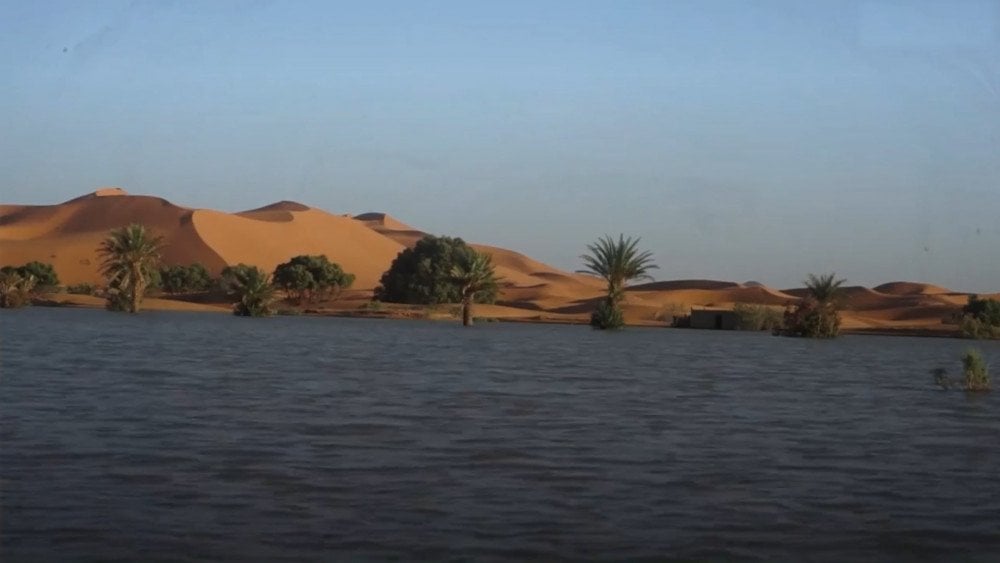
As a result of abnormal rains, the dried-up Lake Iriqui was filled with water again, Morocco (the Sahara Desert)
Marrakech, the capital of Morocco, experienced 45 mm (1.77 inches) of rain over two days starting from October 12, which exceeds two months’ worth of rainfall for the region (the monthly average for October is 21.3 mm [0.84 inches]).
Heavy rains caused flooding that submerged residential areas and paralyzed transportation on the streets of the city.
It is noteworthy that such unusually heavy rains and subsequent flooding have struck the country multiple times in recent months. For instance, in September alone, more than 100 mm (3.94 inches) of rain fell in just two days, which significantly exceeds the annual average for this arid region.
Storm Kirk
On October 8, the powerful storm Kirk hit Western Europe.
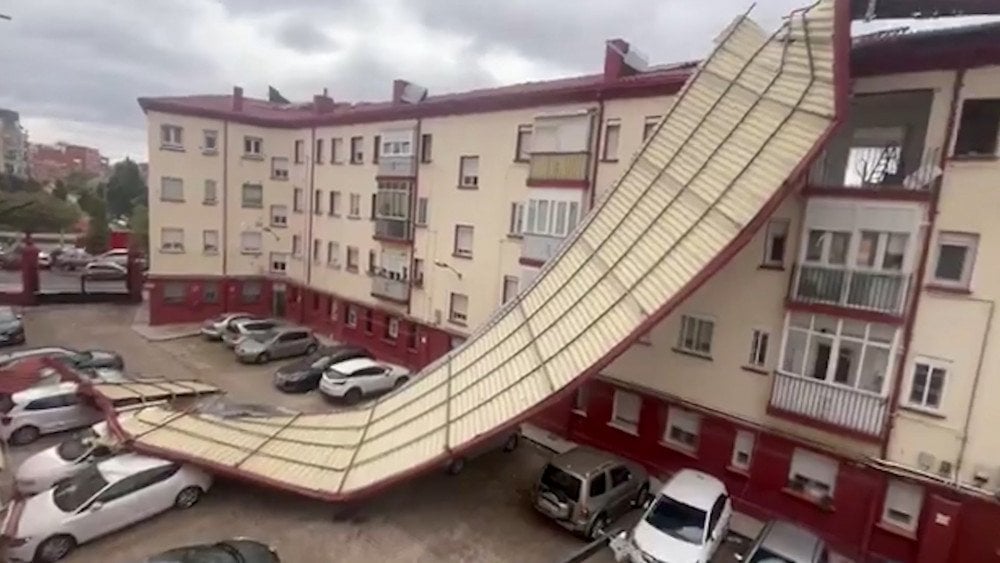
A strong gust of wind during Storm Kirk ripped the roof off a house, Portugal
On the coast of Portugal, wind speeds reached 120 km/h (75 mph). Waves rose up to 7 meters (23 feet). In the city of Porto, the storm uprooted over 400 trees, damaging cars and blocking railway lines in the northern part of the country. More than 300,000 people were left without electricity.
The strong winds also impacted northern and northwestern Spain.
In the Spanish province of Cantabria,
wind gusts reached up to 205 km/h (127 mph),
tearing roofs off a supermarket and a hospital.
In the Galicia region, fallen trees, landslides, and floods severely disrupted traffic on both roadways and railways.
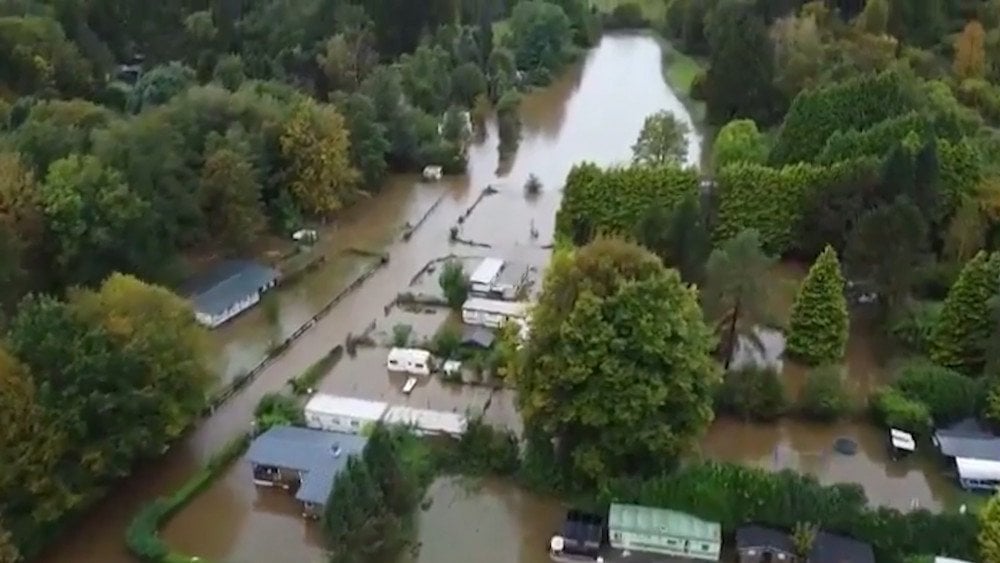
Storm Kirk caused flooding in the Galicia region, Spain
The storm severely affected the southern and central regions of France. In the Mediterranean Sea, off the coast of the city of Sète, three vessels capsized, resulting in the death of an amateur sailor, while another was hospitalized in critical condition.
In Paris,
torrential rains set a new October record:
71 mm (2.8 inches) of rain fell in just one day.
The waters of the Grand Morin River, a tributary of the Seine, overflowed, flooding streets and roads.
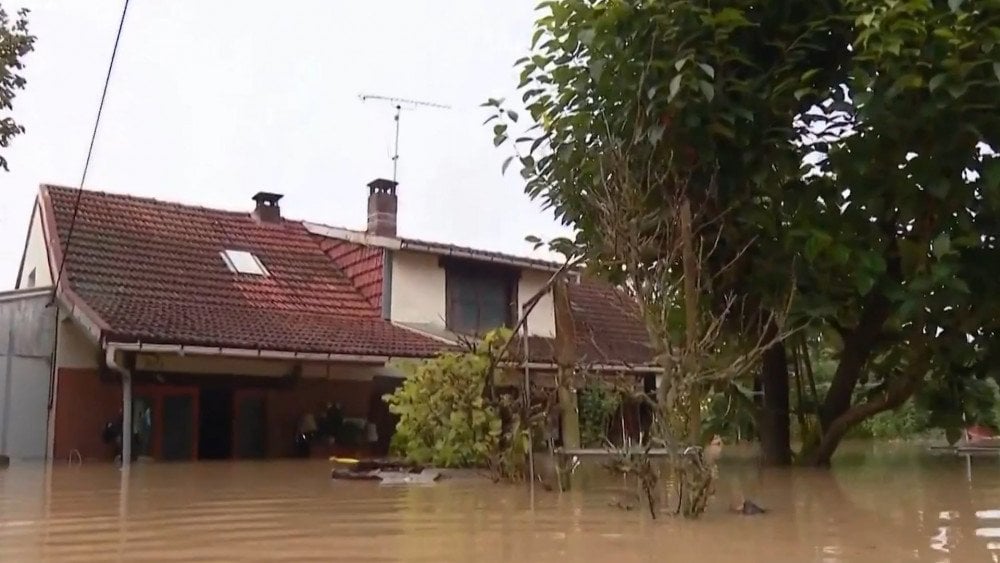
The Grand Morin River overflowed its banks and flooded streets, France
Water poured from the ceiling of the French Parliament building. In the south of the country, about 65,000 people were left without electricity.
The storm then moved to Italy, where it also brought torrential rains and flash floods. In Milan, on October 9, nearly 40 mm (1.57 inches) of rain fell. The Lambro River overflowed its banks, flooding the streets of the city. A red alert was issued across the Lombardy region, and all schools were closed in some areas.
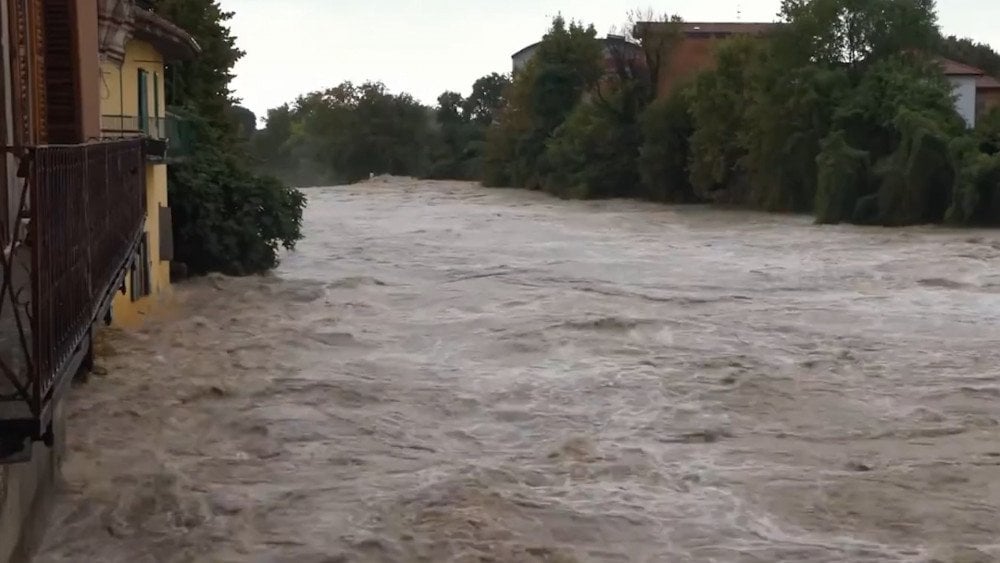
Torrential rains caused flash floods, Milan, Italy
Brazil
On October 11 and 12, storms with strong winds and rain hit central and southeastern Brazil. As a result, 2.1 million homes and businesses were left without electricity. Water supply disruptions were also reported.
Tragically, eight people lost their lives, primarily due to falling trees and collapsing walls.
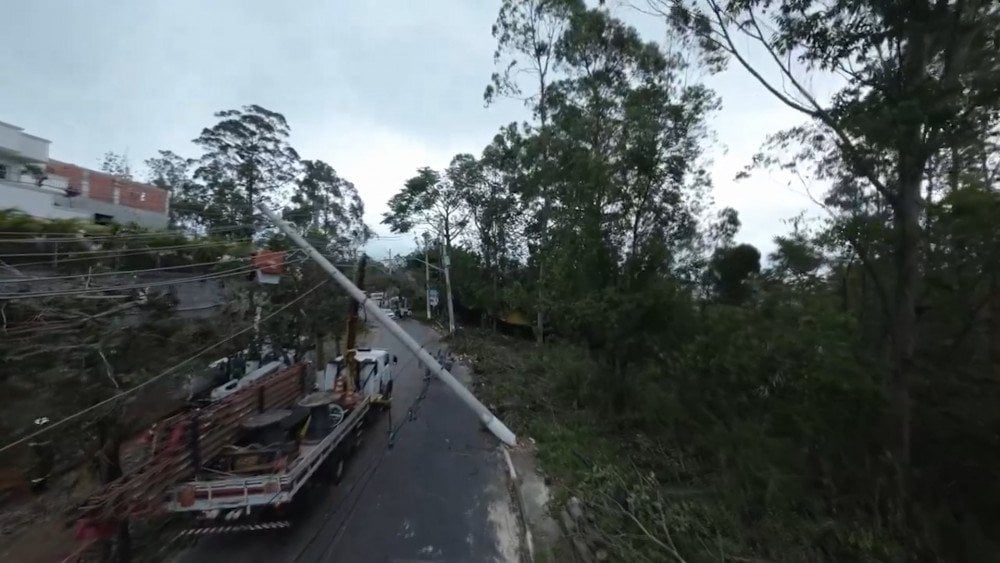
Strong winds damaged power lines, Brazil
The storm that struck the Greater São Paulo area, which includes the city of São Paulo and its surroundings, raised concerns among due to its high destructive potential. In São Paulo, weather stations from the National Institute of Meteorology recorded a wind gust of nearly 108 km/h (67 mph), but experts estimate that in some areas in the south of the city, wind speeds may have exceeded 120 km/h (75 mph), which corresponds to hurricane force.
Following 167 days of drought, a heavy downpour hit the capital of Brazil, Brasília, causing water to leak through building roofs. Inside the Chamber of Deputies, the lower house of Brazil’s National Congress, officials had to use umbrellas due to the leaks.
In the municipality of Três Ranchos, Goiás State,
a “microburst” completely destroyed a new sports facility
that was just about to be opened.

A “microburst” destroyed a new sports facility in the municipality of Três Ranchos, Goiás State, Brazil
A “microburst” occurs due to a downward air current that hits the ground and spreads outwards, creating destructive winds.
Microbursts used to be extremely rare, but in recent years, they have been happening with alarming frequency and causing significant damage. The danger of these phenomena lies in their sudden onset and highly localized nature, as in the case of this sports facility. Buildings nearby remained untouched, and even fragile solar panels were not damaged, yet almost nothing was left of the facility—only debris and rubble, as if an explosion had taken place.
Vietnam
On the afternoon of October 9, two tornadoes suddenly formed in Vietnam: the first around 3:00 PM in Tri Phai commune, Thoi Binh district, Ca Mau province, and the second tornado swept through the communes of Ngoc Chuc, Hoa Thuan, and Vinh Thanh in Giong Rieng district, Kien Giang province, at 6:00 PM.
According to eyewitnesses, within just two minutes, the tornado swept away structures and metal cladding from buildings, uprooted numerous trees that blocked roads, and severely damaged 67 homes, 29 of which were completely destroyed.
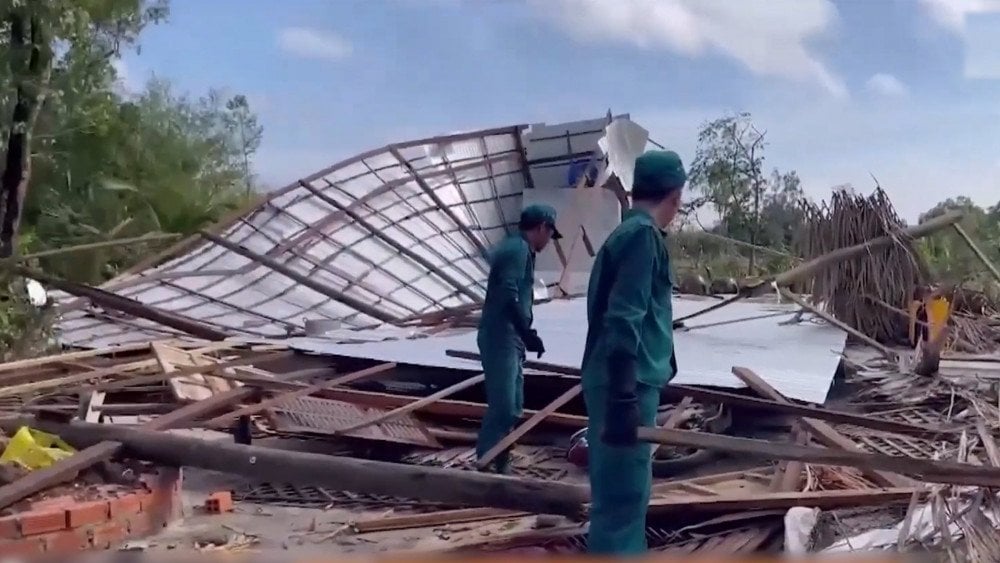
Aftermath of the tornado in Vietnam
According to the People’s Committee, 19 people, including 5 children, were injured and taken to hospitals. It is worth noting that tornadoes in Vietnam are rare. This is due to the country’s geographical proximity to the equator, where conditions for the formation of powerful whirlwinds are absent. Although some tornadoes have occurred, they were usually weak and did not cause significant damage.
Geomagnetic Storms
October has seen an increase in solar activity. From October 1 to 15, there were already six X-class flares on the Sun. On October 3, an X9.0 flare occurred on the Sun, the largest in the current 25th solar cycle.
It was expected to trigger a G3-class geomagnetic storm two days later, but geomagnetic conditions on Earth remained normal, until the fourth day when the forecast materialized. This delayed arrival of the storm puzzled specialists.
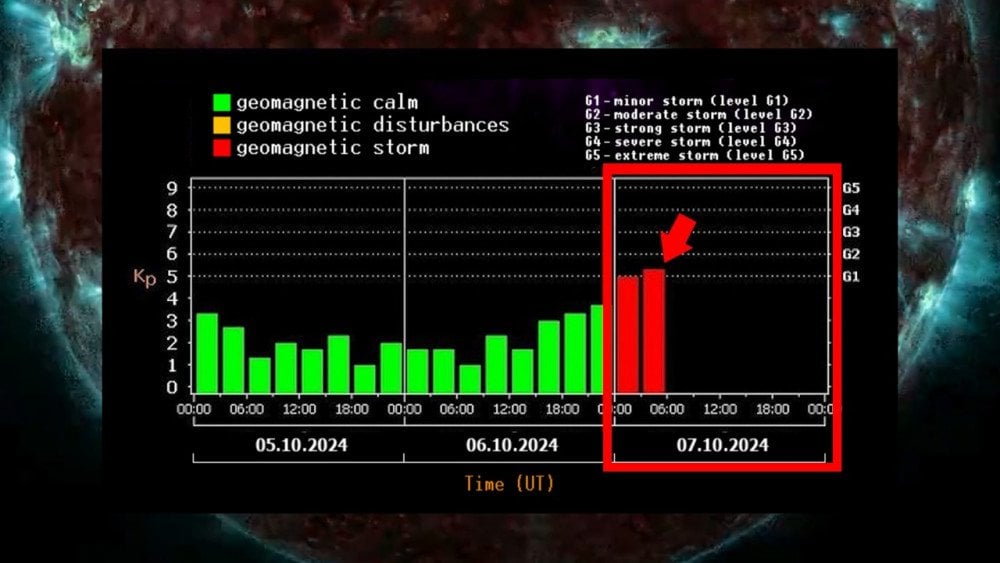
The geomagnetic storm “arrived” on Earth two days late
The plasma ejections from the X1.8 flare that occurred on October 9 triggered a very powerful G4-class geomagnetic storm on our planet
falling just 10% short of the highest level, G5.
The solar wind speed around Earth was approximately 800 km/s (497 miles/s), which
is twice the normal rate. Plasma density was 1,000% of the normal level.
The geomagnetic storm was so intense that auroras were visible in unusually atypical regions, such as Europe along the Mediterranean coast,
and even in Cuba and Haiti, where the likelihood of seeing auroras is virtually zero.
Typically, auroras are observed in areas between 67° and 70° latitude, but
on October 10, the aurora descended to as low as 20° north latitude.
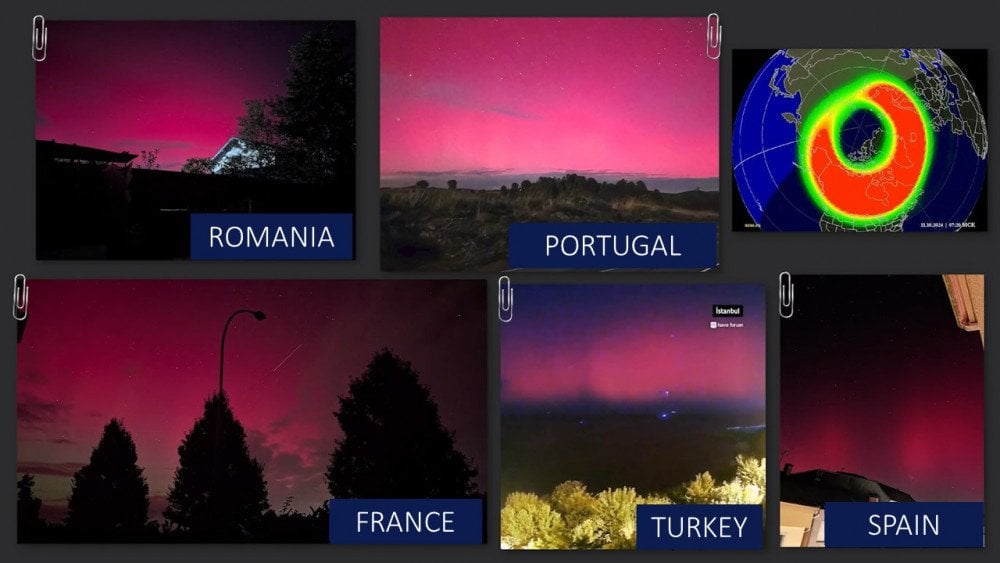
Anomalously red auroras appeared in atypical regions, descending very close to the equator
The storm caused disruptions in GPS and high-frequency radio communications. In the USA, farmers had to pause operations or manually recalibrate their precision farming equipment that relies on GPS technology.
The increasing red hue of the auroras indicates highly dangerous pathological processes occurring in the atmosphere. Detailed information about them was presented at the forum “Global Crisis: There Is a Way Out.”
NASA representatives announced that the Sun has reached the maximum period of its solar cycle. Experts predict that after this peak, which in previous cycles could last about a year, solar activity will begin to decline. However, this time the situation is fundamentally different. The Solar System is now entering the peak of a more global twelve-thousand-year cycle. During this period, it is being subjected to a powerful external cosmic influence, which transmits additional energy to the cores of all planets. As a result, the increase in internal heat and activation of the interiors is now occurring synchronously across all planets of the Solar System and even on their moons.
On Earth as well, we see an increase in volcanic and seismic activity, anomalies in the magnetic field and the heating of the Earth’s crust. Climate disasters are also increasing: fires, storms, hurricanes, extreme rainfall, and floods.
The Sun is no exception: it is also receiving additional energy from external cosmic influences, and its activity will continue to rise rapidly to an extreme level that modern humanity has not yet encountered. Any subsequent solar flare could potentially throw humanity back to the Stone Age.
Therefore, addressing this issue must be urgent and immediate. In a series of “Global Crisis” forums, scientists and volunteers have gathered comprehensive information on this topic. It is time for the entire global community to unite the scientific potential of humanity and collaboratively address the escalating climate crisis before the climate determines our collective fate.
Watch the video version of this article here:
Leave a comment